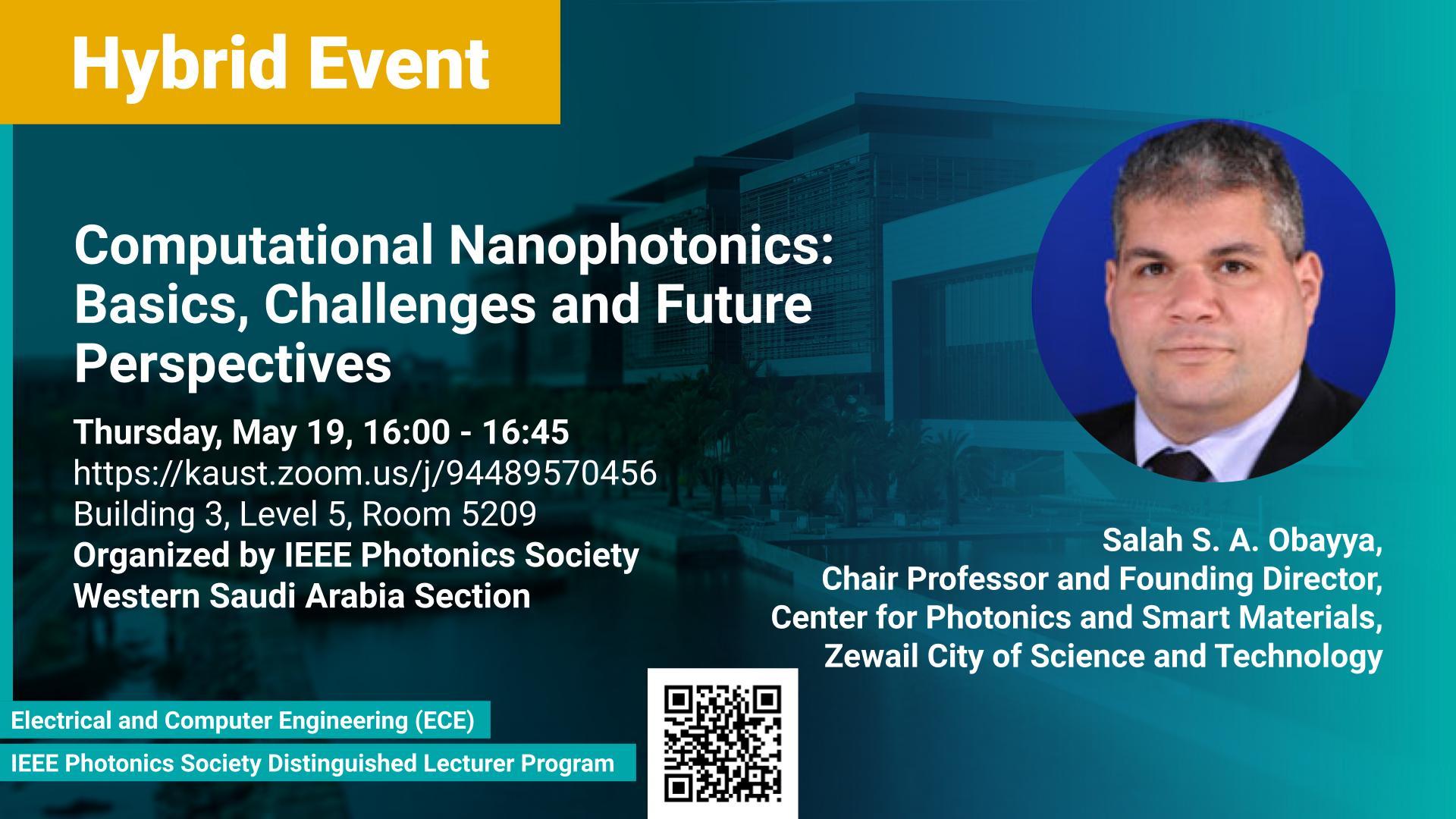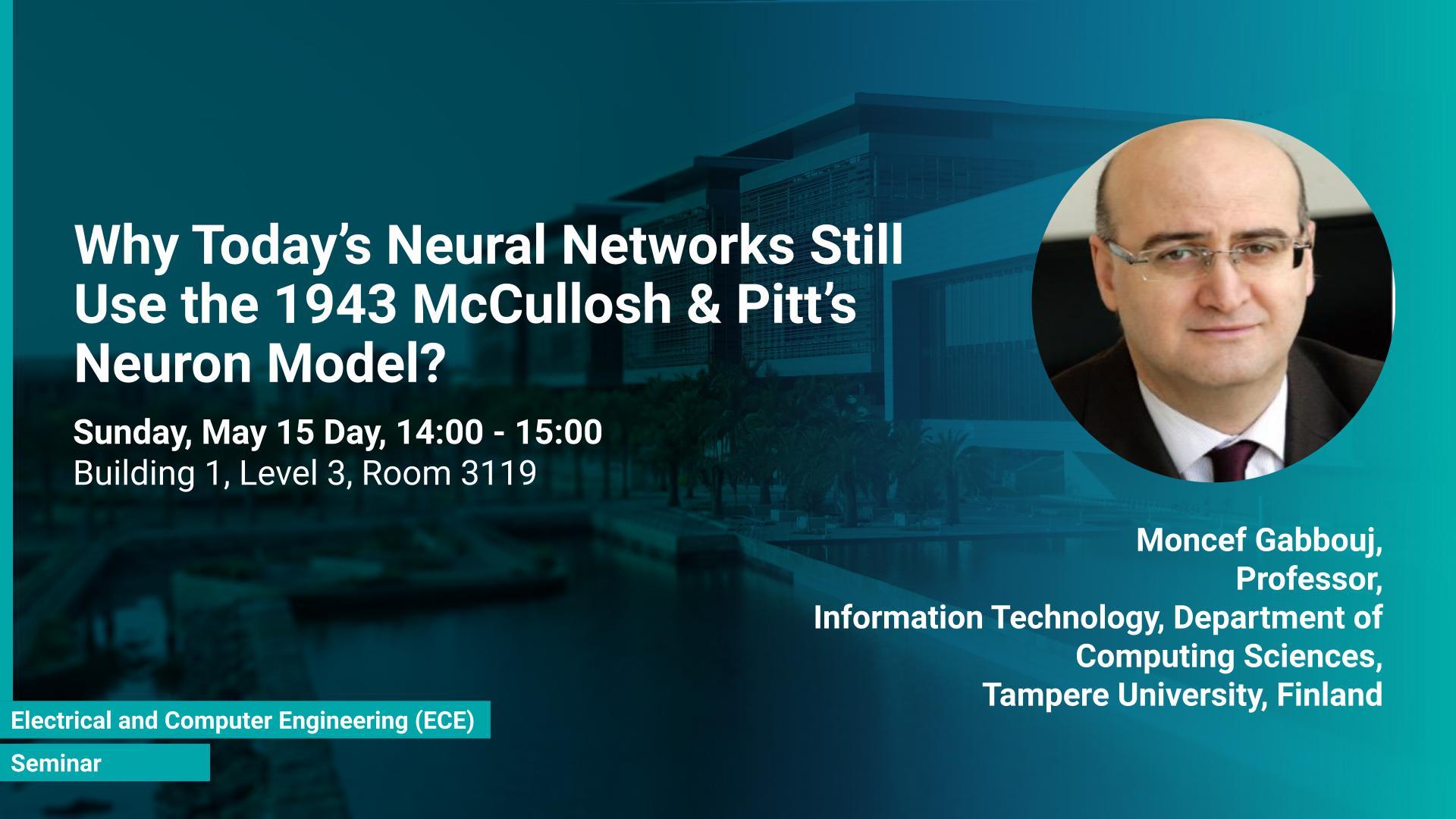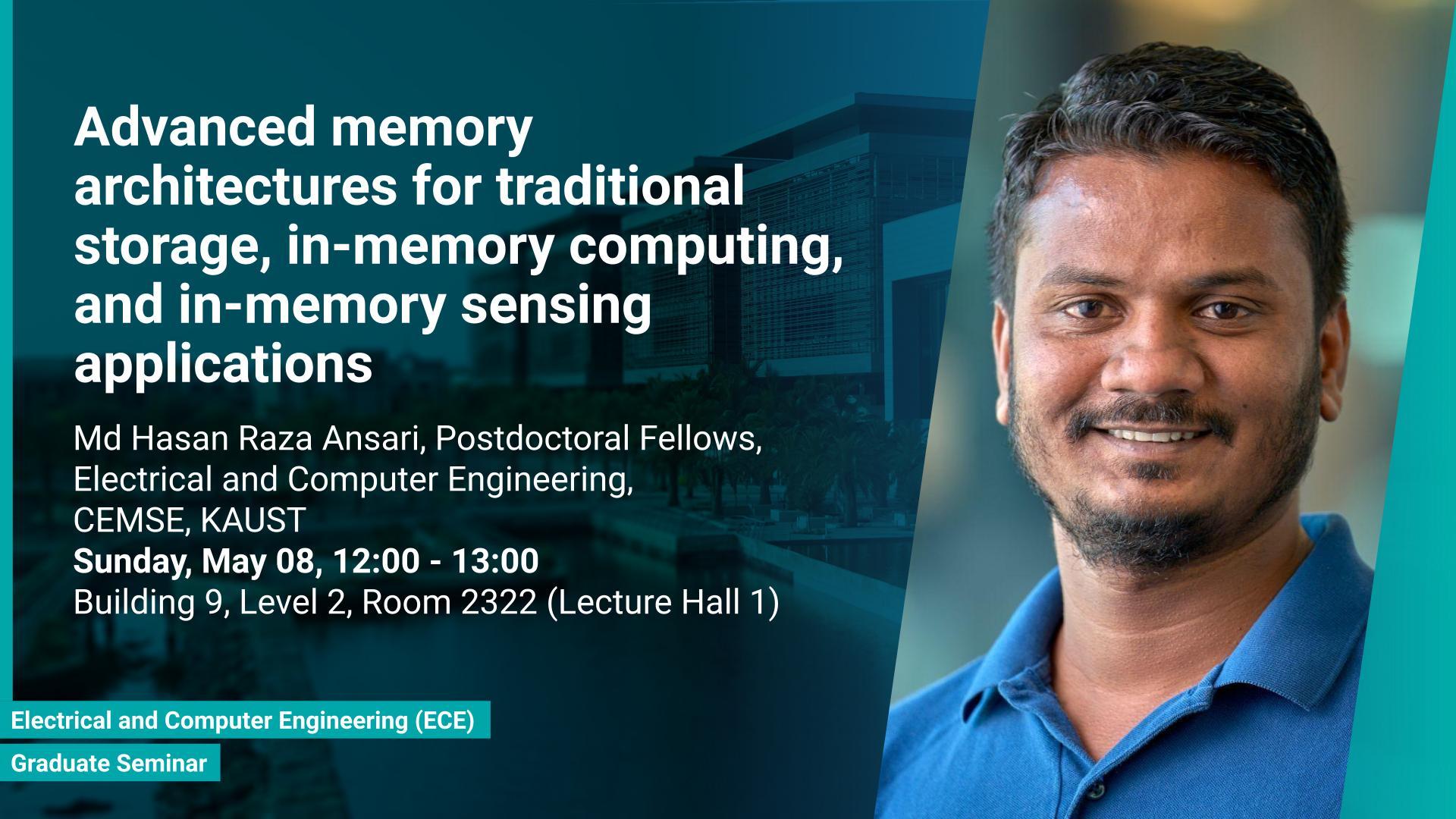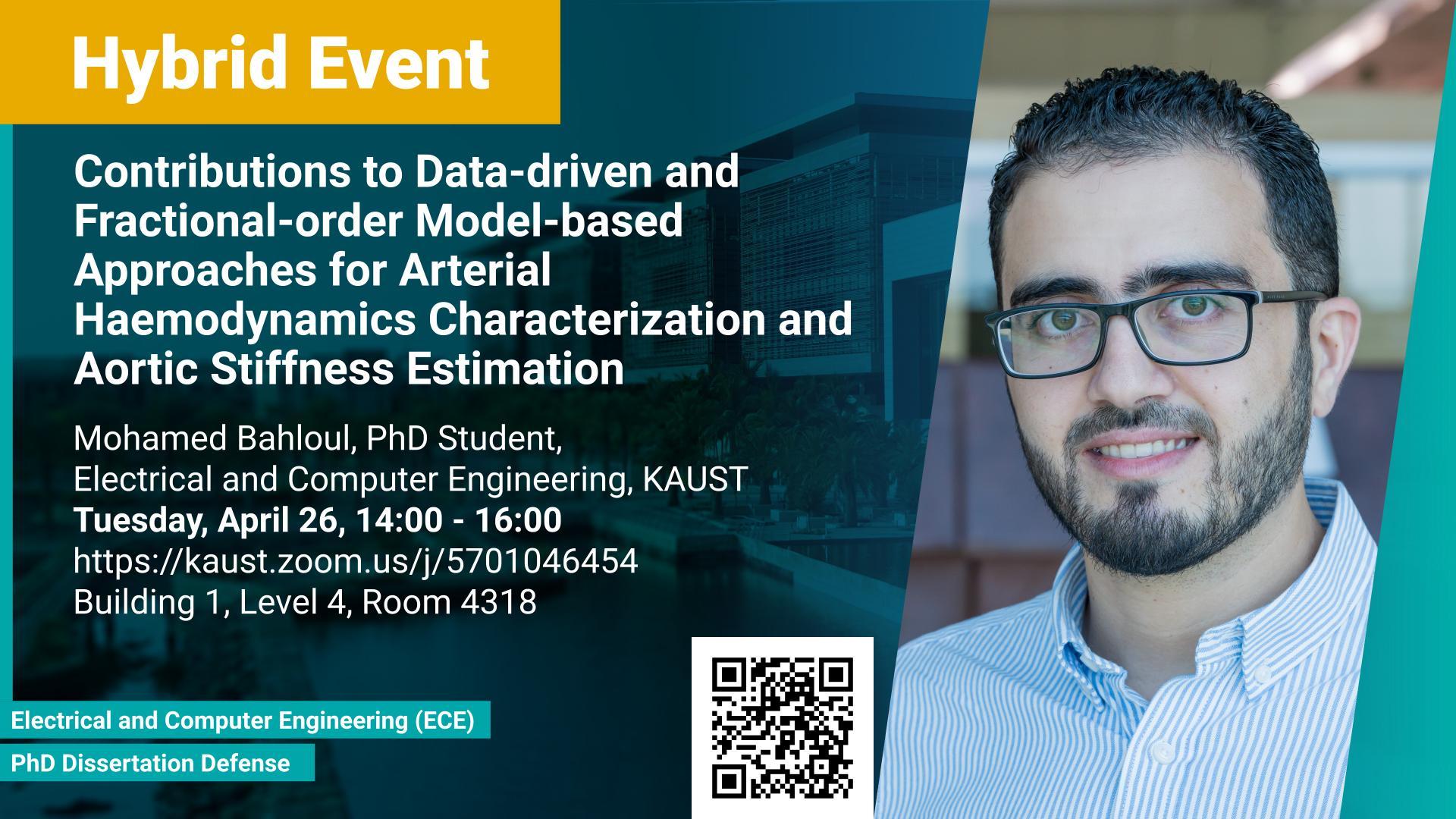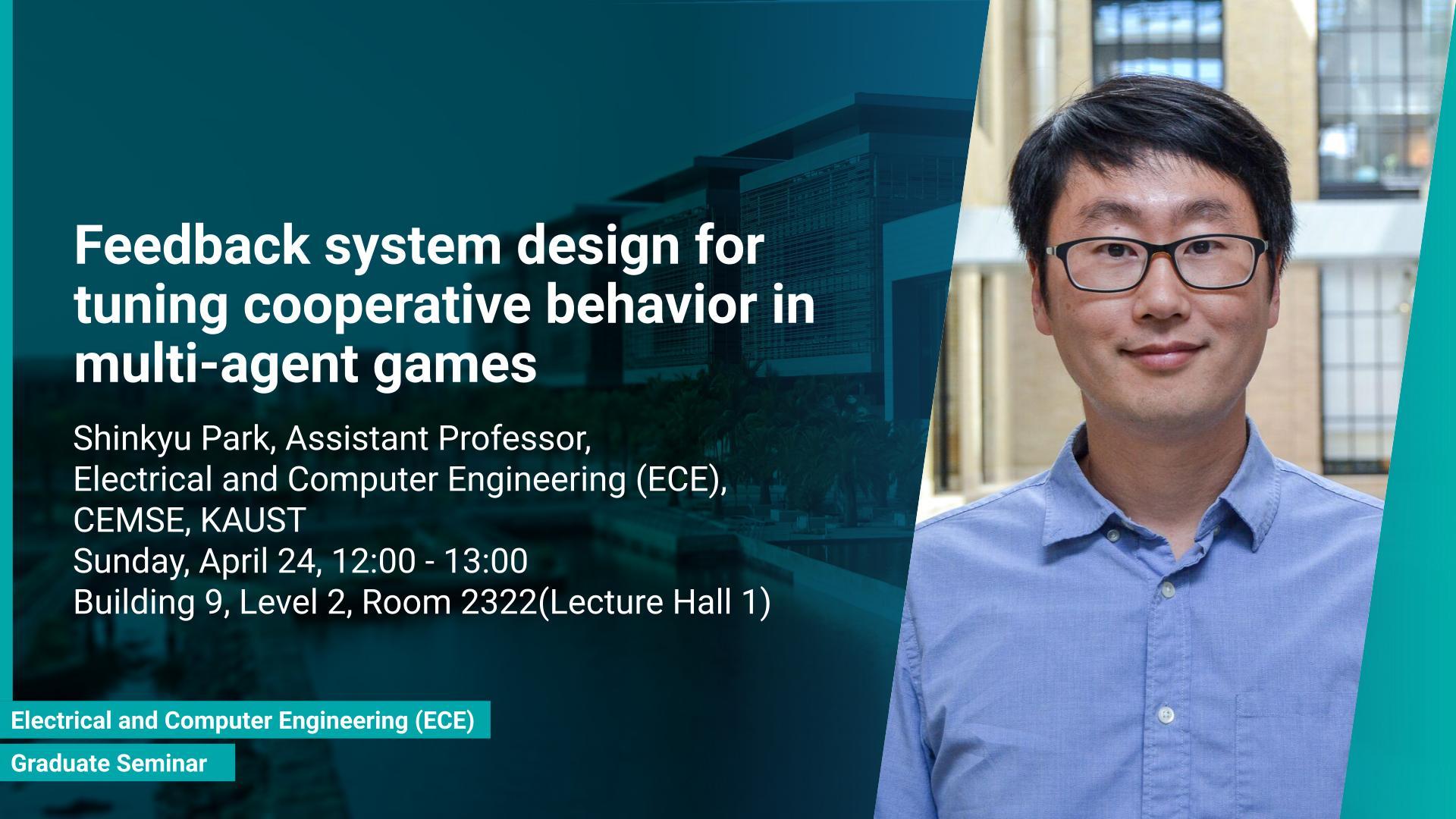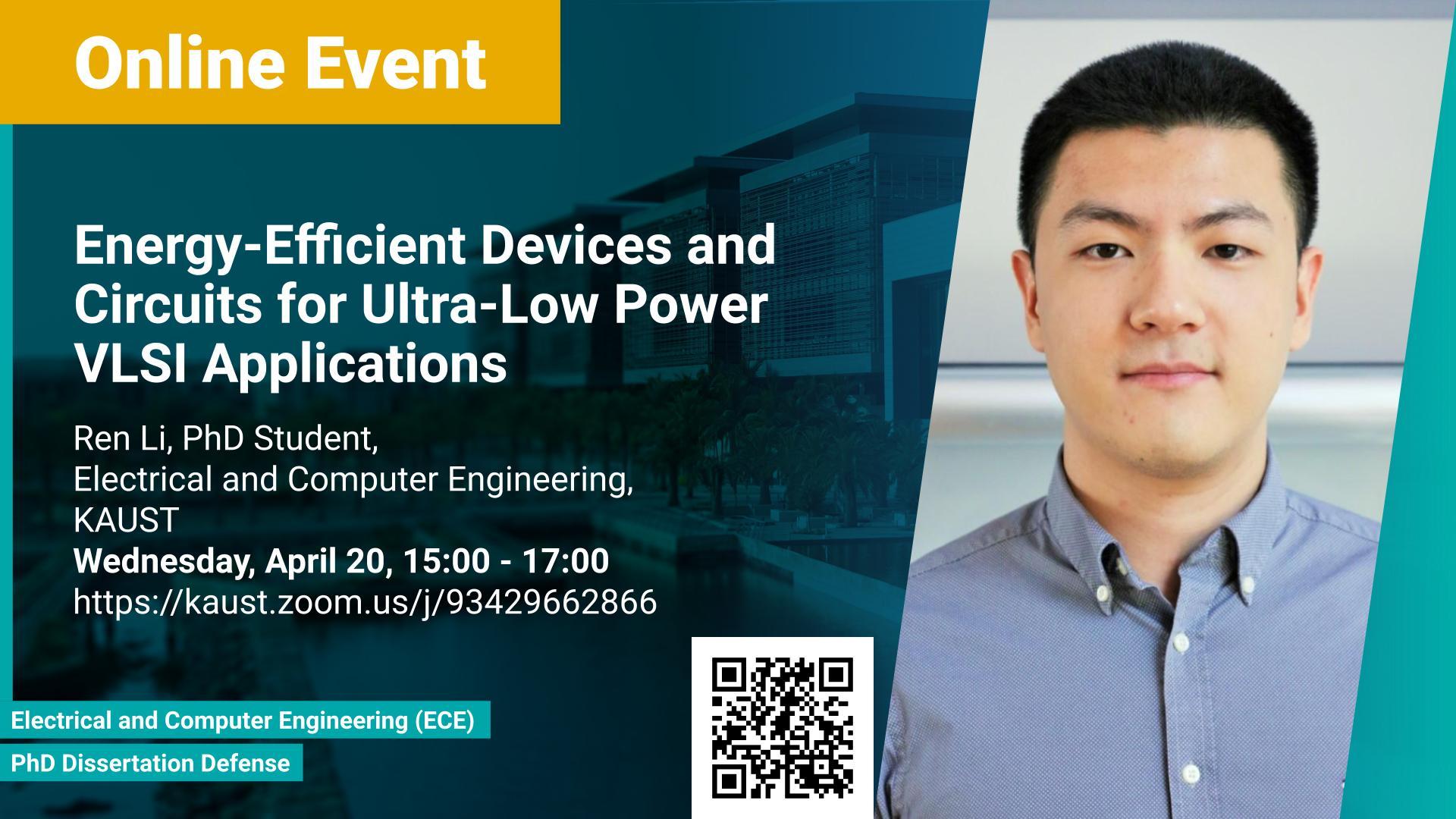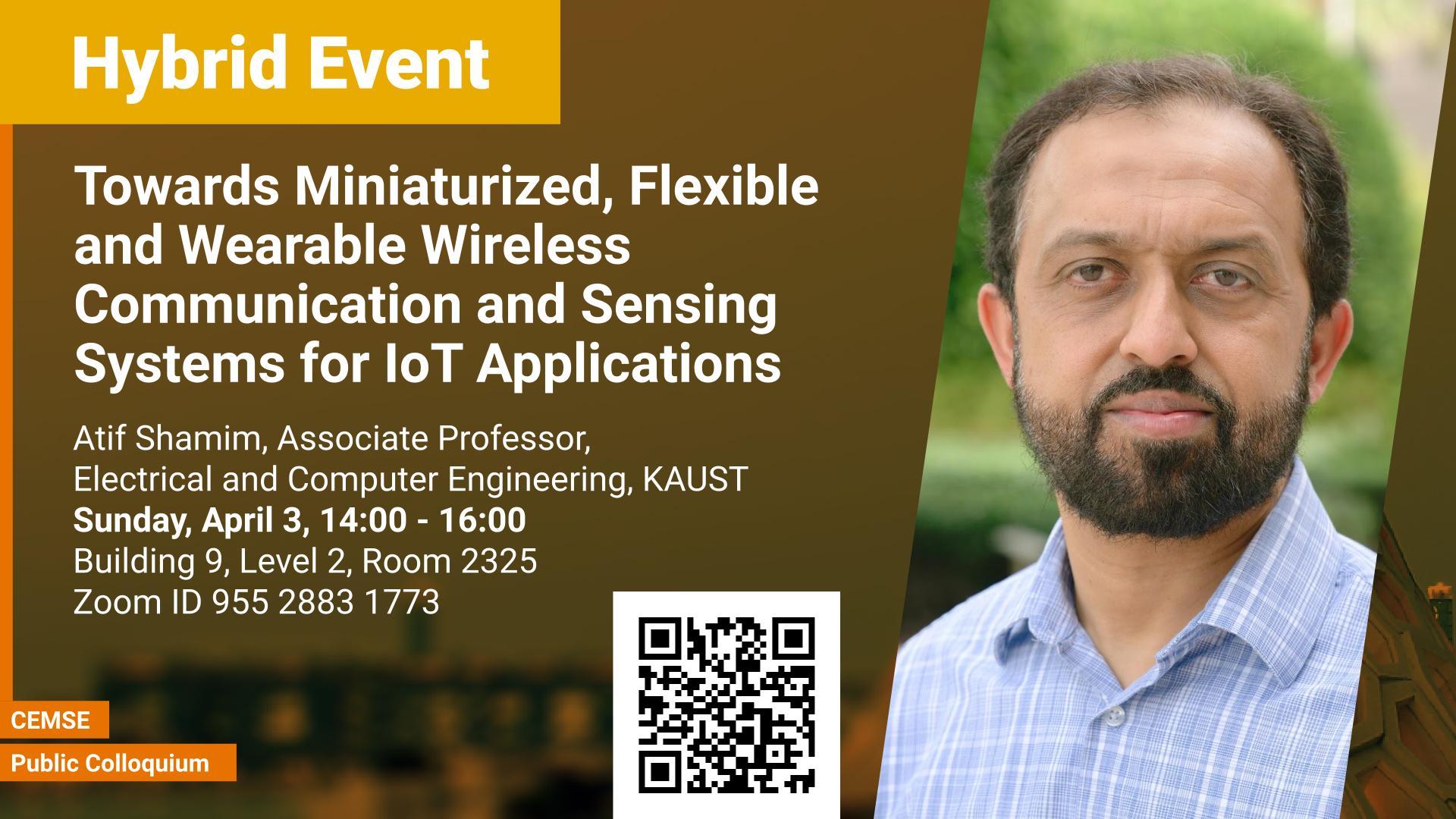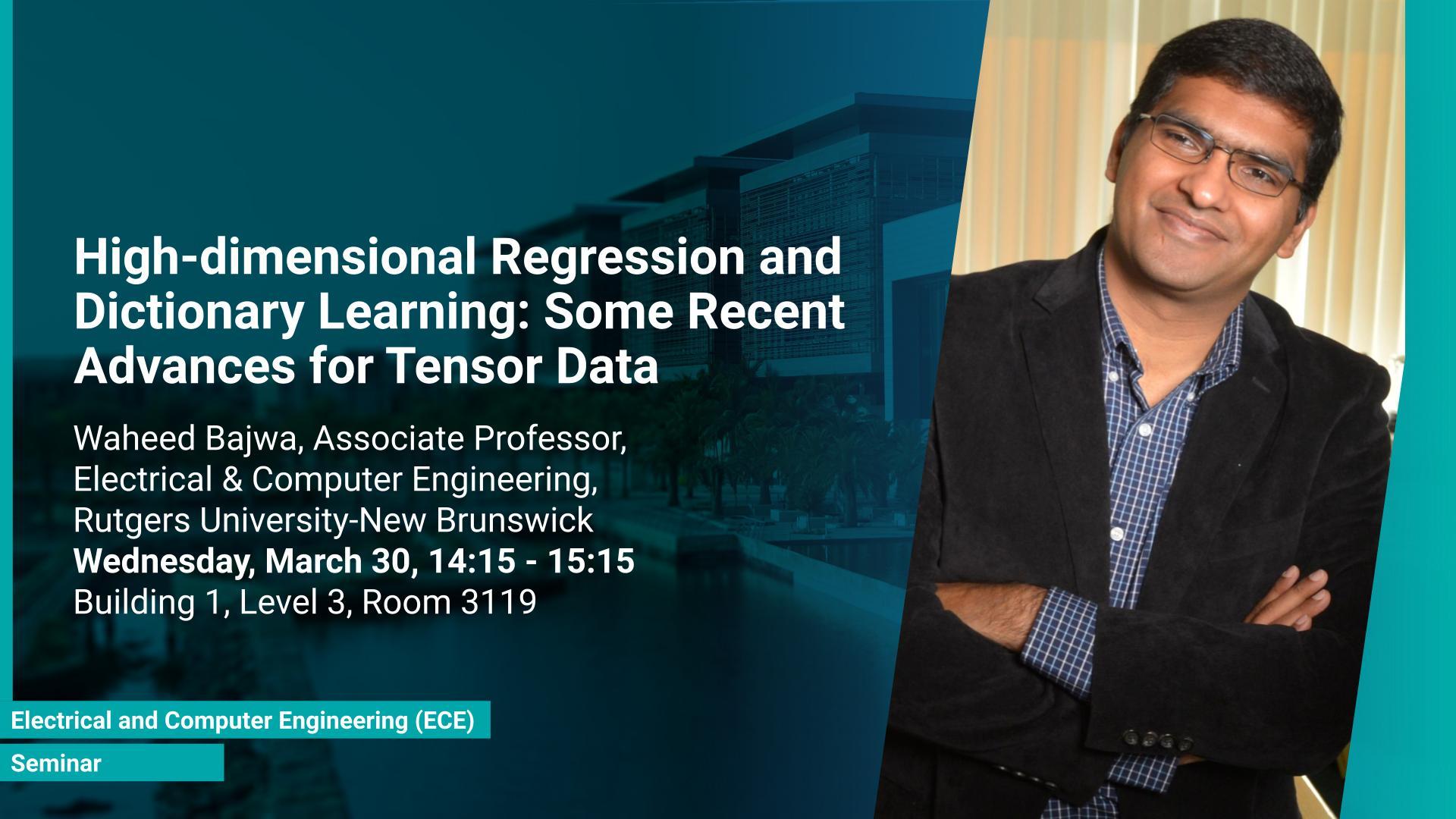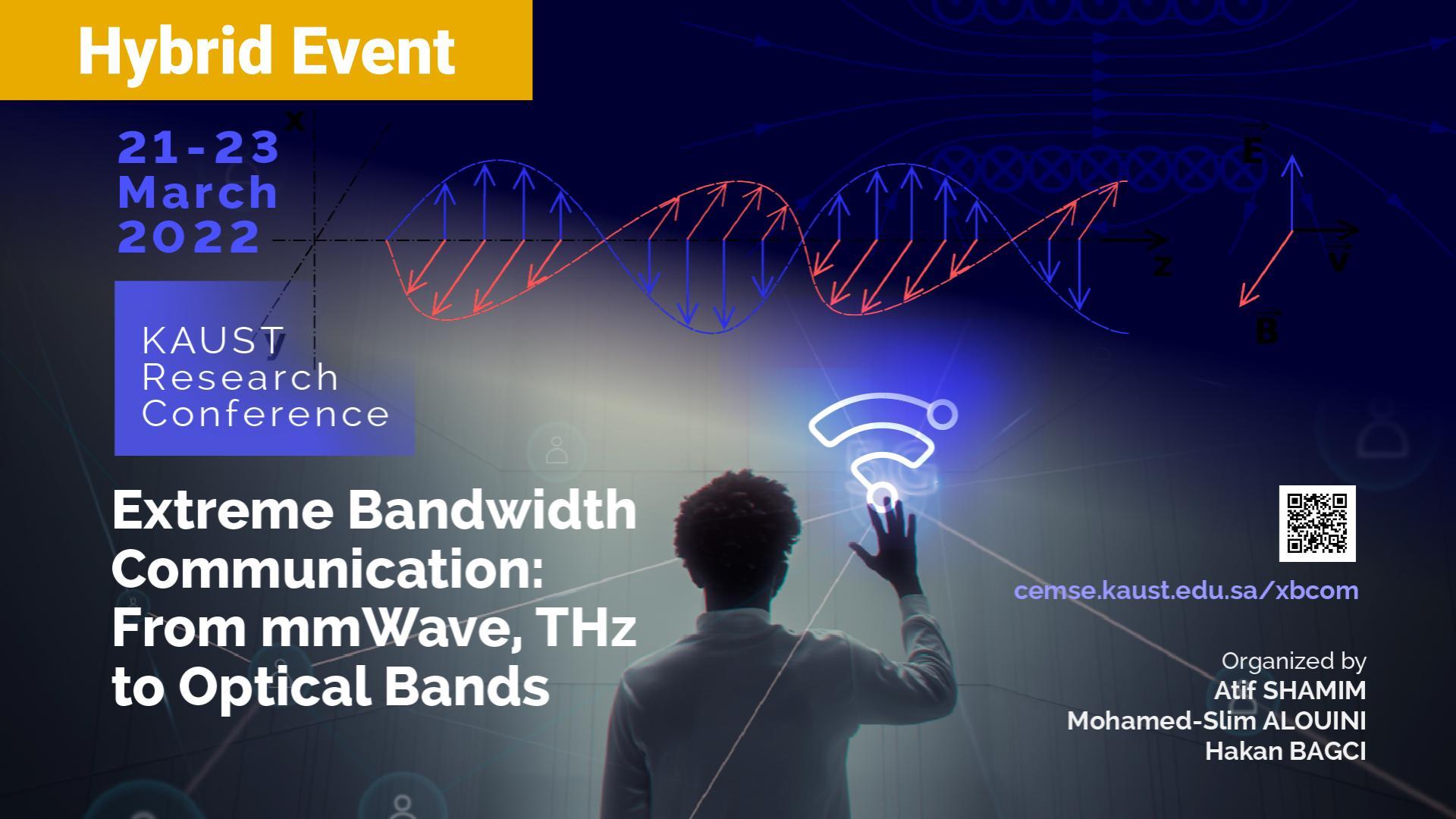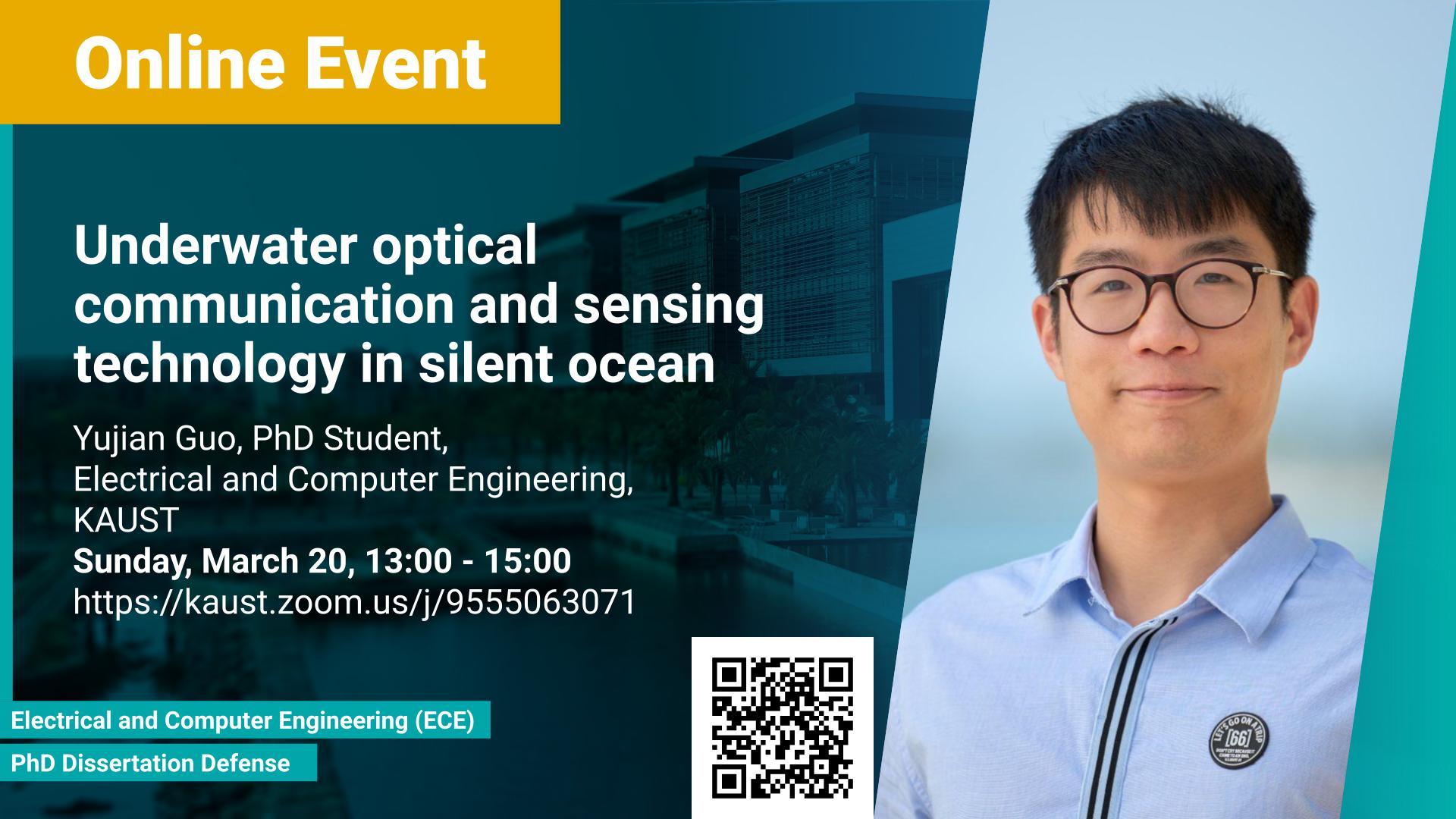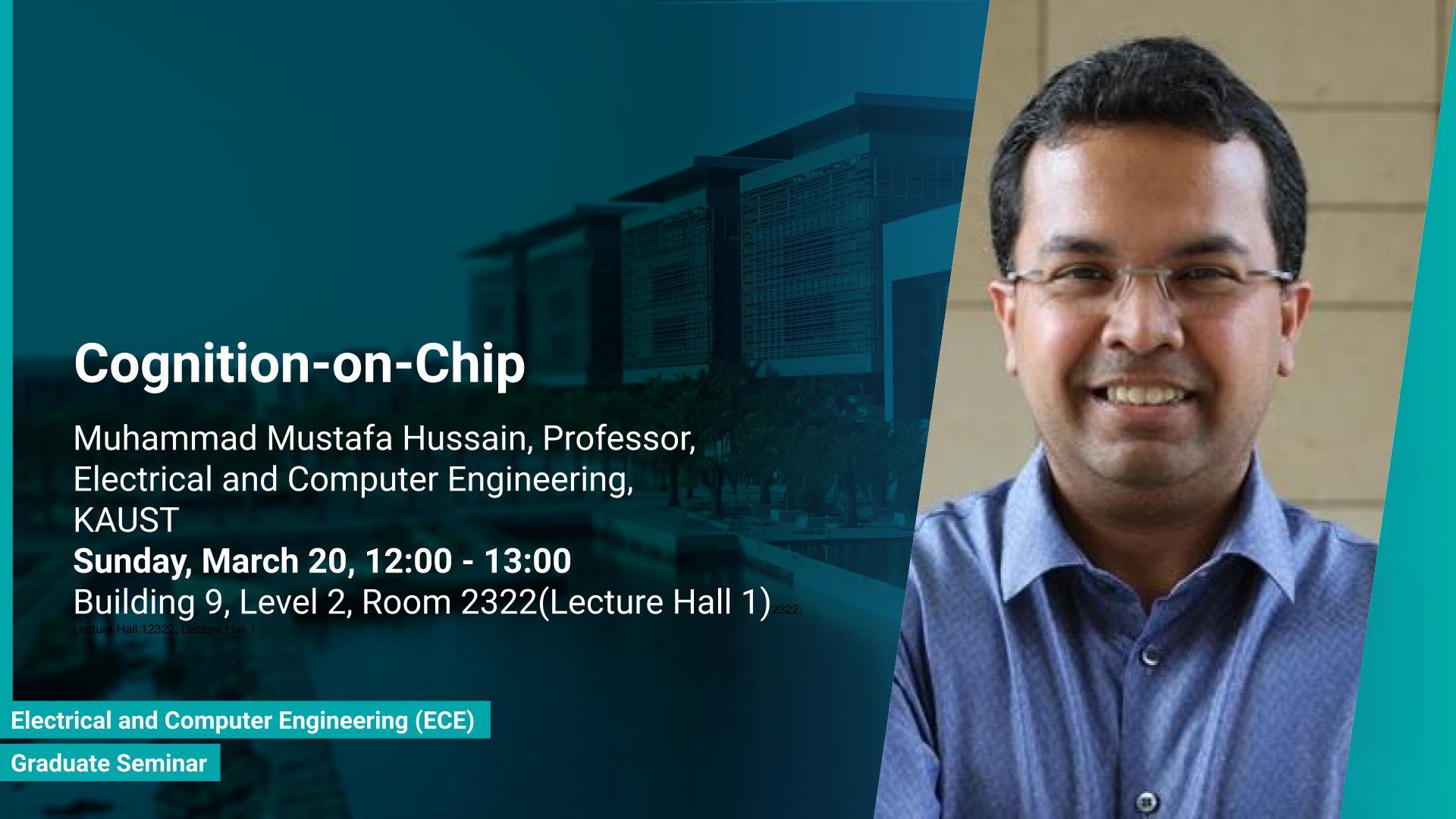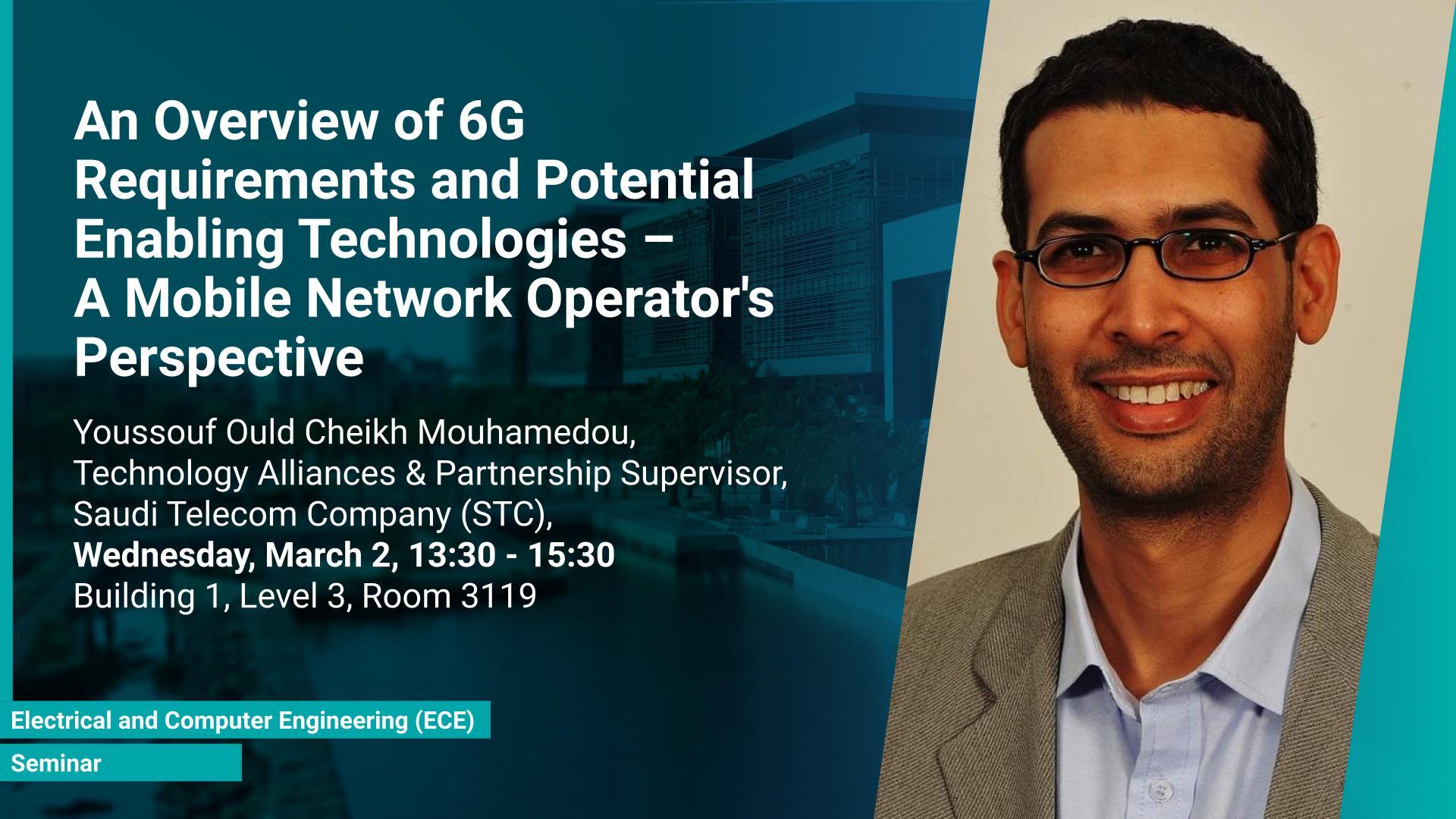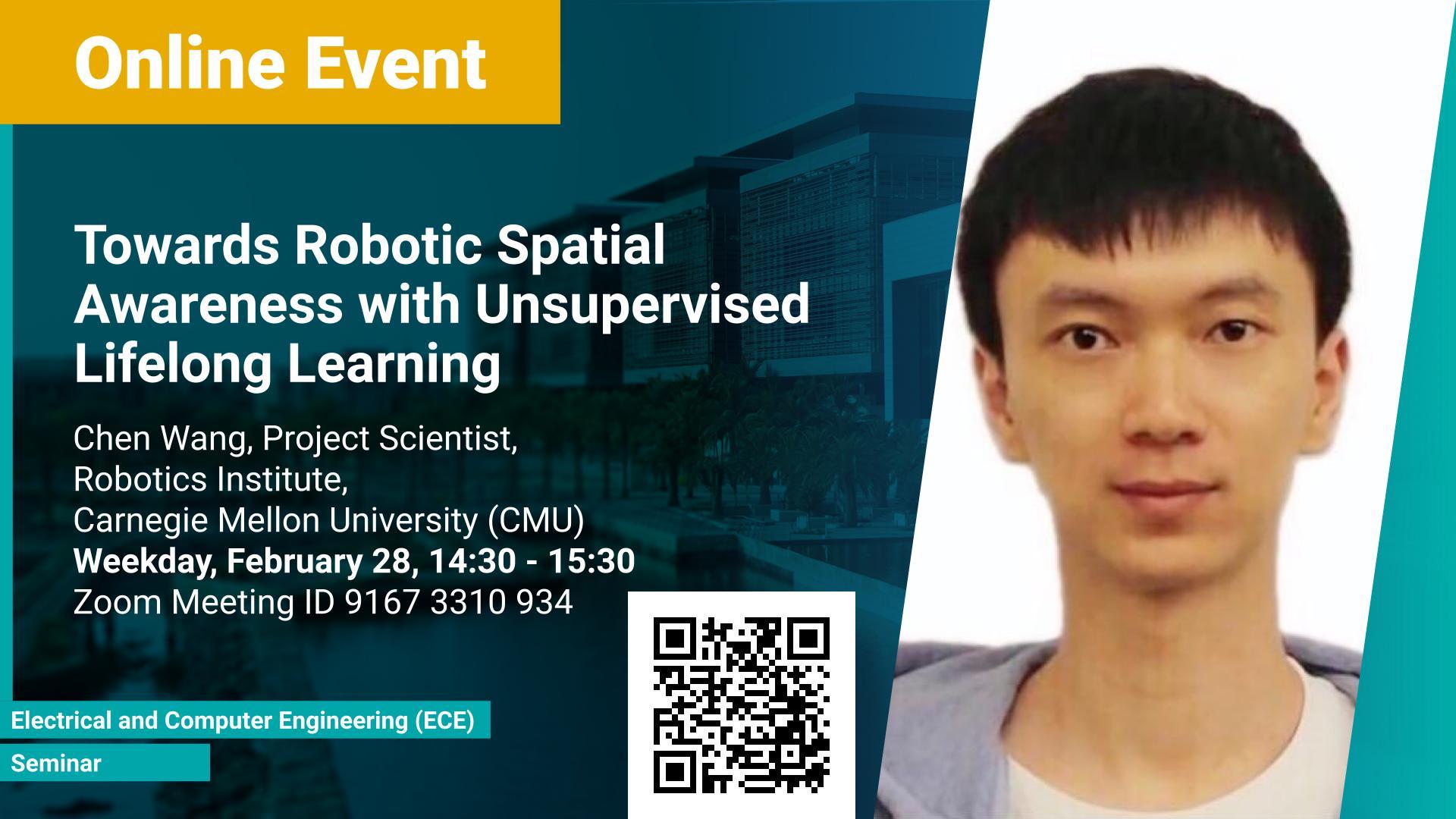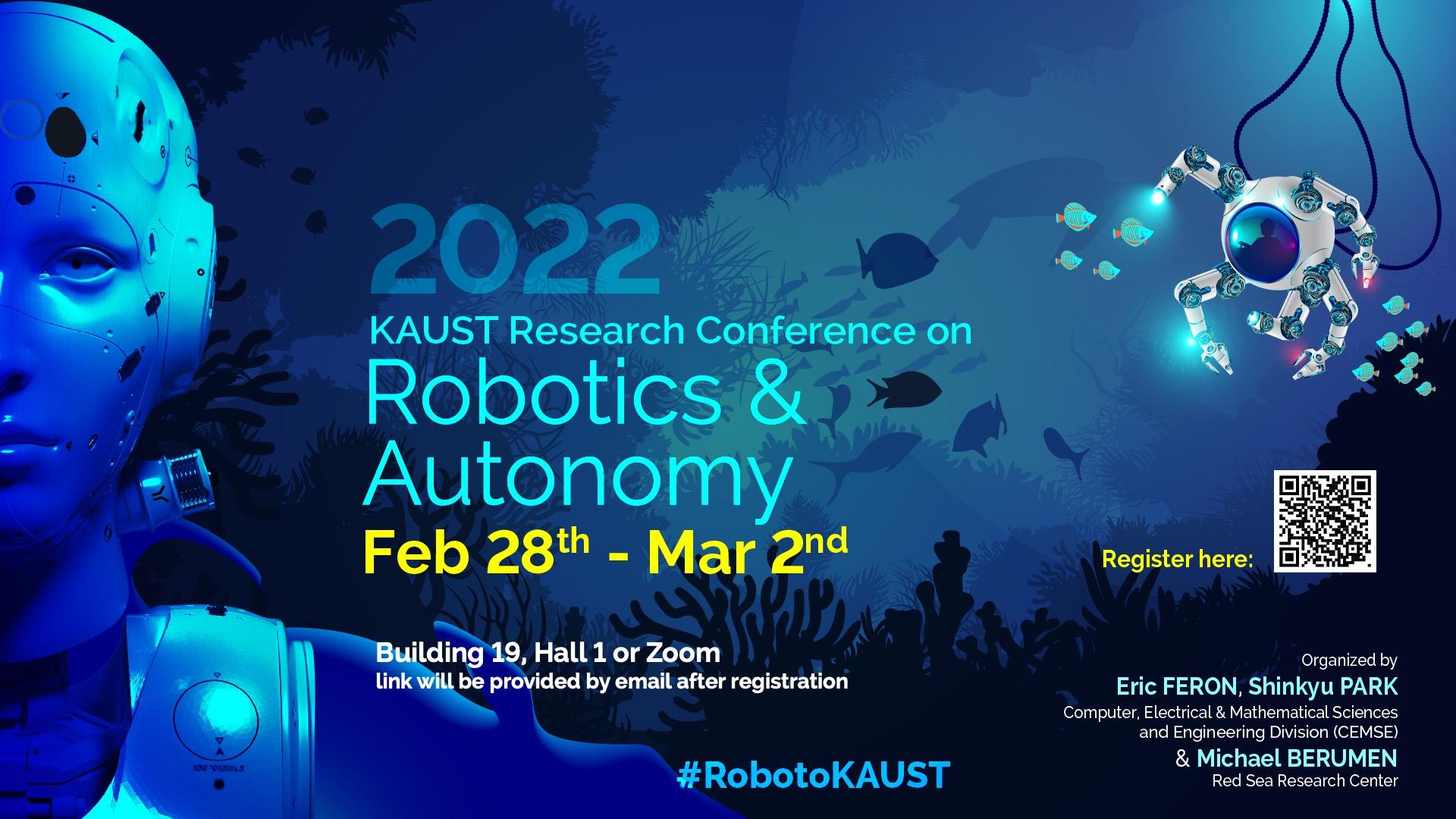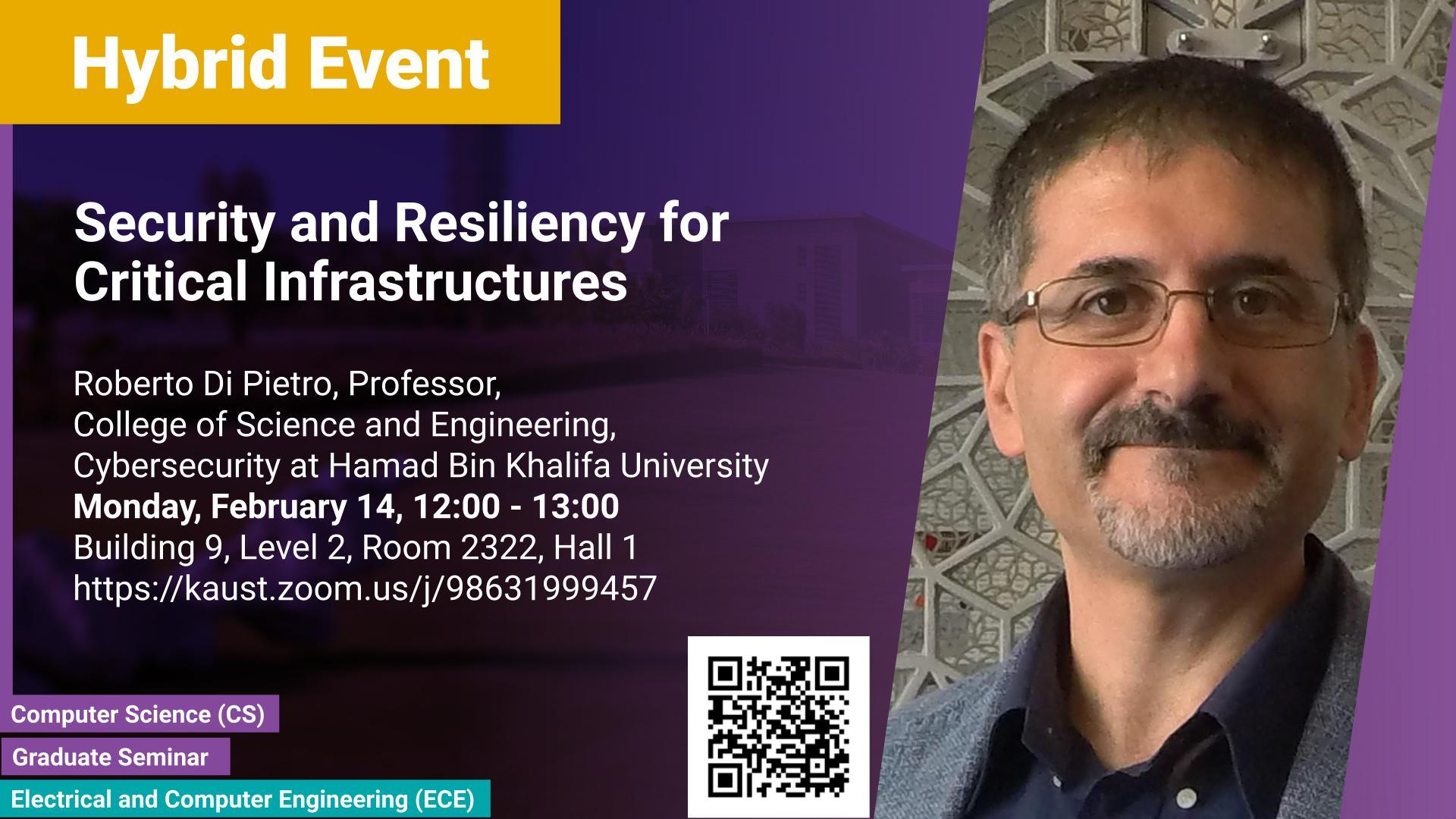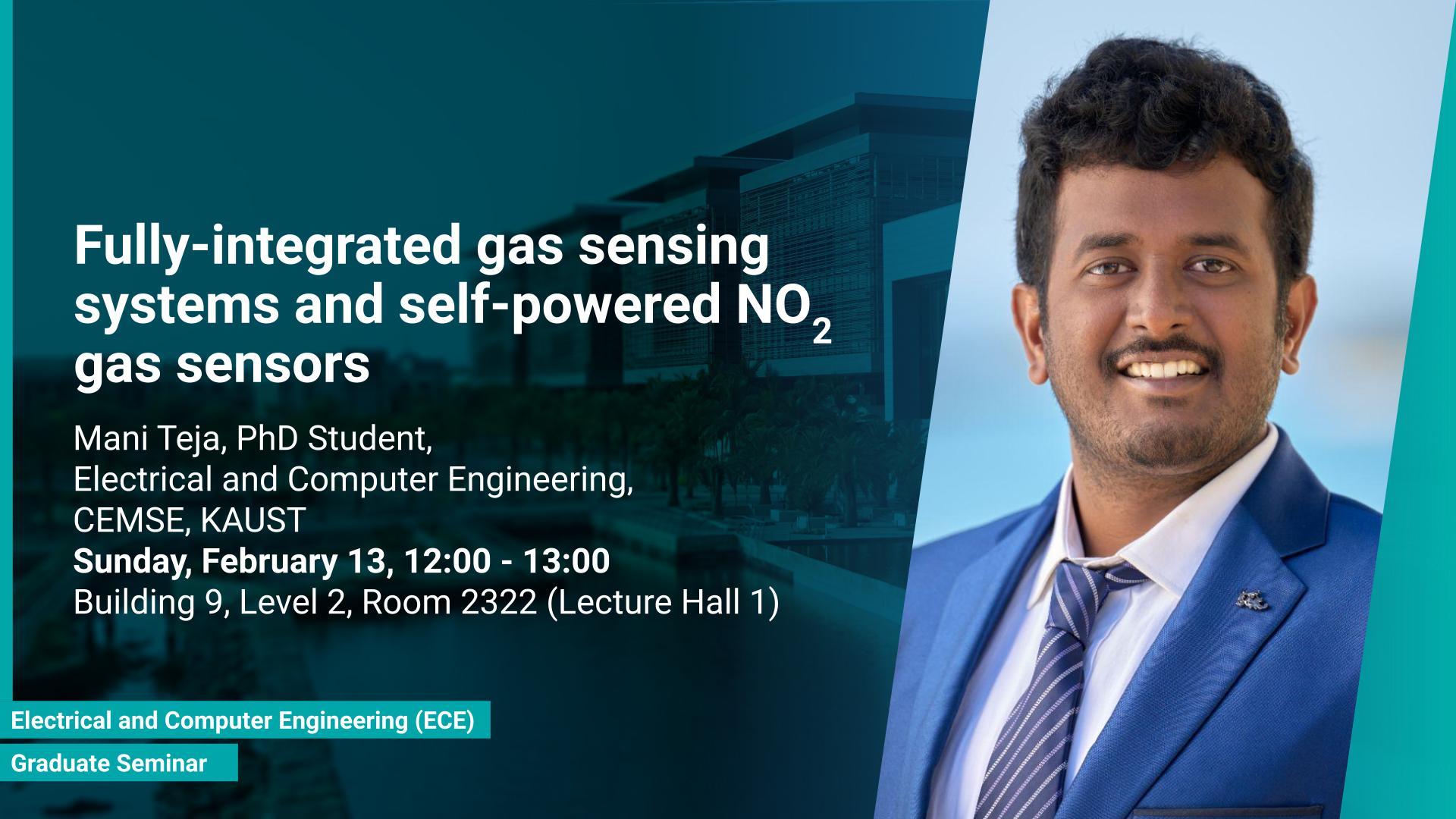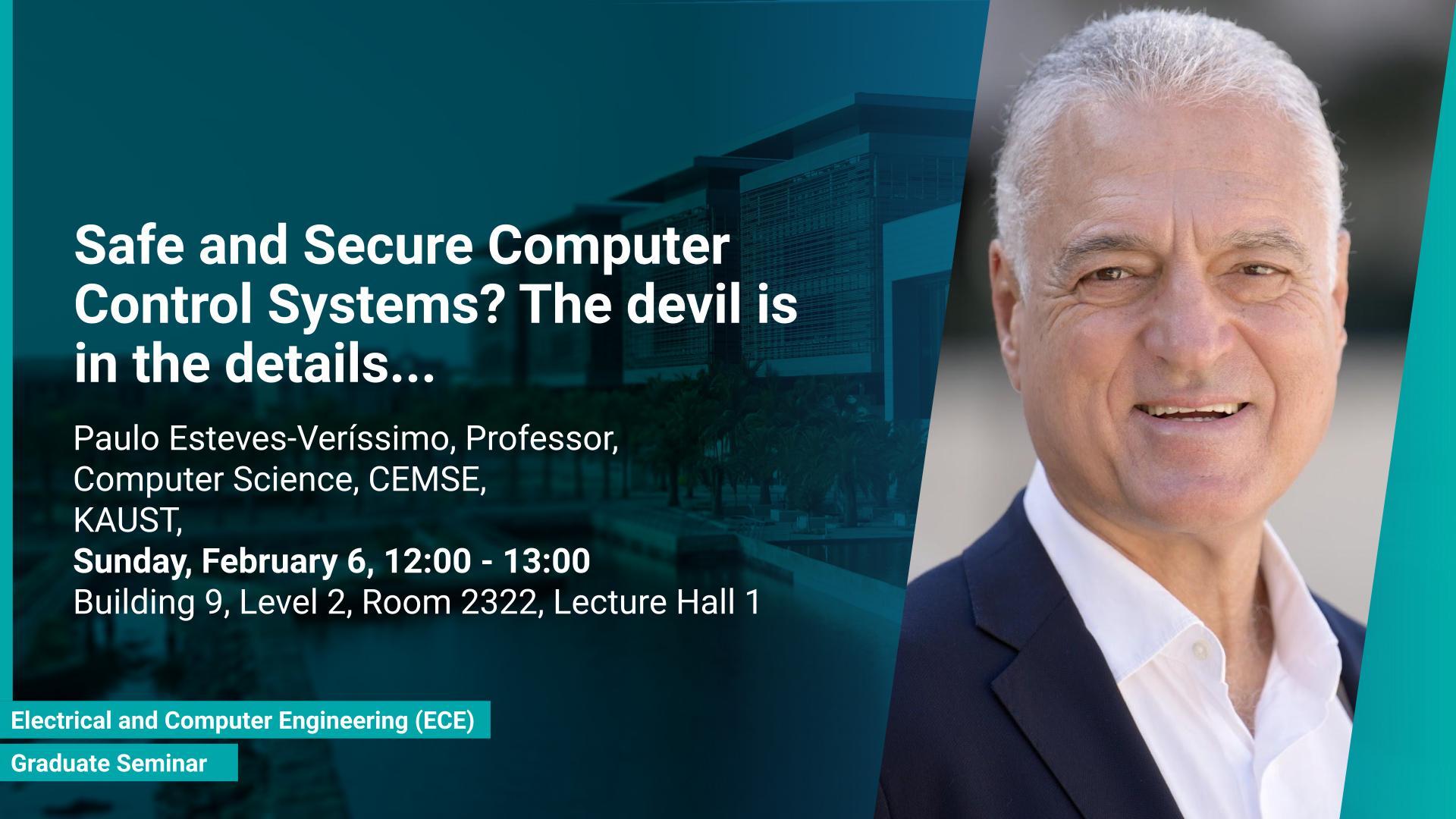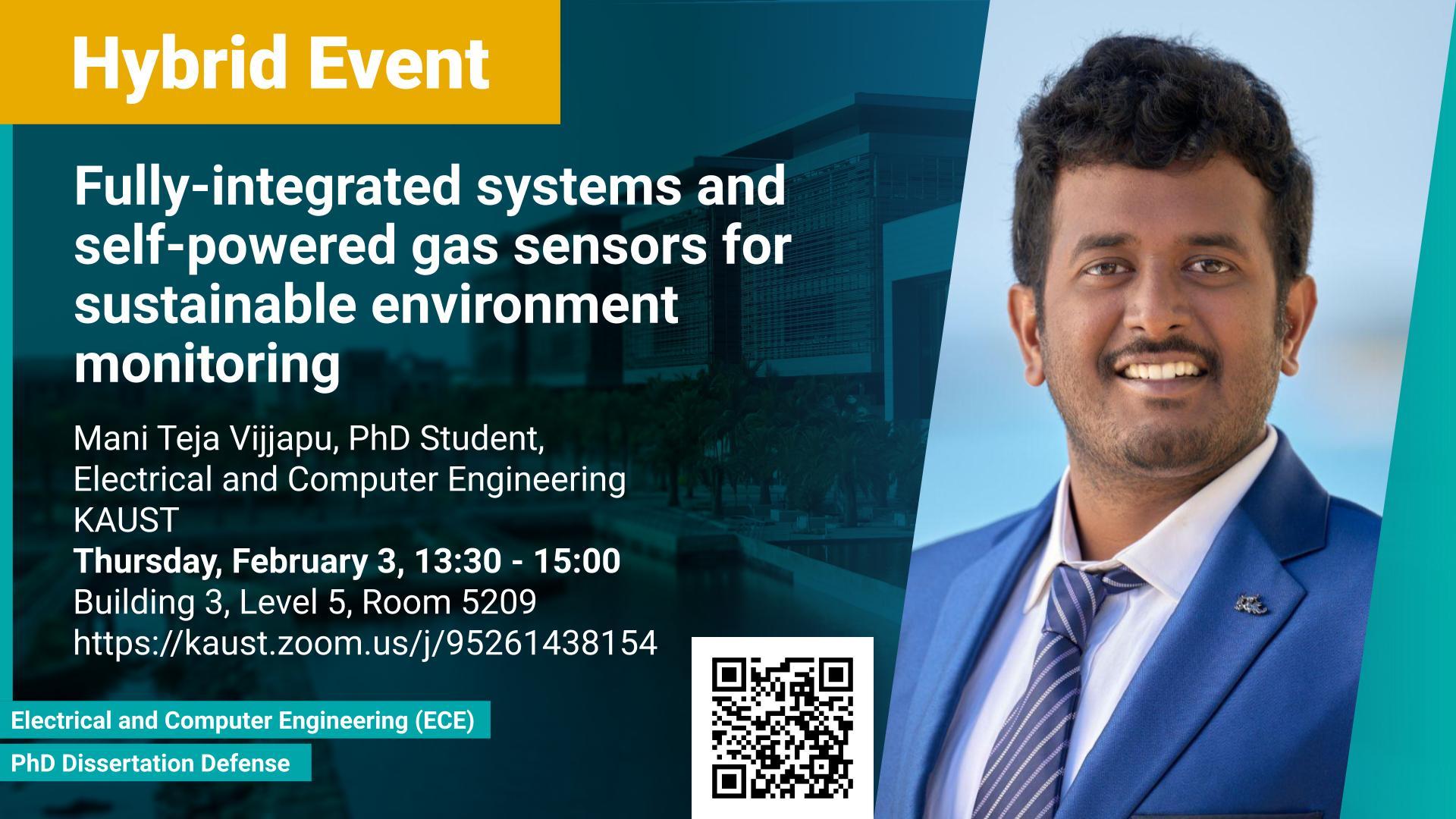Professor Salah S. A. Obayya
Thursday, May 19, 2022, 16:00
- 16:45
B3, L5, R5209
Contact Person
Abstract
Nanophotonics modelling for 21st century applications is becoming vital.
Prof. Moncef Gabbouj, Department of Computing Sciences, Tampere University
Sunday, May 15, 2022, 14:00
- 15:00
Building 1, Level 3, Room 3119
Contact Person
Operational Neural Networks (ONNs) are new generation network models targeting to address two major drawbacks of conventional Convolutional Neural Networks (CNNs): the homogenous network configuration and the “linear” neuron model that can only perform linear transformations over previous layer outputs. ONNs can perform any linear or non-linear transformation with a proper combination of “nodal” and “pool” operators.
Postdoctoral Fellows,
Electrical and Computer Engineering
Sunday, May 08, 2022, 12:00
- 13:00
Building 9, Level 2, Room 2322, Lecture Hall 1
Contact Person
Since Moore's law is facing several bottlenecks, electron devices are currently developing toward the trend of “More than Moore” which is based on functional diversification in terms of sensing, storage, and processing of information.
Tuesday, April 26, 2022, 14:00
- 16:00
B1, L4, R4318
Contact Person
Cardiovascular diseases (CVDs) remain the leading cause of death worldwide. Patients at risk of evolving CVDs are assessed by evaluating a risk factor-based score that incorporates different bio-markers ranging from age and sex to arterial stiffness (AS).
Assistant Professor,
Electrical and Computer Engineering
Sunday, April 24, 2022, 12:00
- 13:00
Building 9, Level 2, Room 2322, Lecture Hall 1
Contact Person
In social dilemmas, a class of multi-agent games, agents' rationality-based strategic interactions to learn a payoff-maximizing strategy would result in diminishing returns. Such games include the prisoner's dilemma and public goods game where individually rational decision making reults in all decision-making agents receiving smallest rewards. In this presentation, I will explain a new decision-making model that elicits cooperative behavior in social dilemmas. The model enables the social interaction (reciprocity) between agents in their decision making, which allows cooperative behavior to emerge. We discuss how methods for feedback system design and analysis can be applied to explain the emergence of cooperative behavior and how we can tune such behavior.
Ren Li, PhD Student, Electrical and Computer Engineering
Wednesday, April 20, 2022, 15:00
- 17:00
KAUST
Contact Person
In this thesis, energy-efficient Micro-/Nano-electromechanical (M/NEM) relays are introduced, their nonleaking property and abrupt switch ON/OFF characteristics are studied, designs and applications in the implementation of ultra-low-power integrated circuits and systems are explored. The proposed designs compose of core building blocks for any functional microprocessor, for instance, fundamental logic gates; arithmetic adder circuits; sequential latch, and flip-flop circuits; input/output (I/O) interface data converters, including an analog-to-digital converter (ADC) and a digital-to-analog converter (DAC); system-level power management DC-DC converters and energy management power-gating scheme. Another contribution of this thesis is the study of device non-ideality and variations on the functionality of circuits. We have thoroughly investigated energy-efficient approximate computing with non-ideal transistors and relays for the next generation of ultra-low-power VLSI systems.
PhD Student,
Electrical and Computer Engineering
Sunday, April 17, 2022, 12:00
- 13:00
Building 9, Level 2, Room 2322, Lecture Hall 1
Contact Person
The advancement of silicon semiconductor technology since the 1940s has been changing the world by redefining human living style and addressing global challenge of energy shortage. Since the 1960s, GaAs, InP research started to bring human beings into modern life with mobile communications and high-speed networks. When it goes to the 1980s, wide band gap semiconductors including GaN and SiC which have high breakdown field and high mobility, were demonstrated into high-power electronics as well as solid-state lighting.
Sunday, April 10, 2022, 12:00
- 13:00
Building 9, Level 2, Room 2322, Lecture Hall 1
Contact Person
Wearable, fast-response, and efficient displays are suitable to enjoy the AR and VR world.
Professor,
Electrical and Computer Engineering
Sunday, April 03, 2022, 14:00
- 16:00
B9, L2, R2325
With the advent of wearable sensors and internet of things (IoT) applications, there is a new focus on electronics which can be compact, light-weight and flexible so that these can be worn or mounted on non-planar objects. Due to large volume (billions of devices), it is required that the cost is extremely low, to the extent that they become disposable. In the context of miniaturization and lower cost, concepts such as System-on-chip (SoC) where a complete system is realized on a single chip (integrated circuit (IC)) or System-on-package (SoP) where the package of the chip is made functional are beneficial. The flexible and low-cost aspects can be addressed through additive manufacturing technologies such as inkjet and screen printing. Two important aspects of any IoT system, “Sensing” and “Wireless Communication”, will be the focus of this talk. The SoC part of the talk will focus on integration of the antenna on the chip and ways of enhancing its efficiency despite the lossy Silicon substrate in conventional semiconductor manufacturing processes. Through a SoP design example, it will be shown how smart packaging of a chip can boost the performance without adding any additional components or cost. In the later part of the talk, additive manufacturing will be introduced as an emerging technique to realize low cost and flexible wireless communication and sensing systems. Various novel functional inks, such as conductive, dielectric, phase change and sensing materials will be shown. A multilayer process will be presented where dielectrics are also printed in addition to the metallic parts, thus demonstrating fully printed components. Finally, some printed sensor examples will be shown for remote health and environmental monitoring. The promising results of these designs indicate that the day when electronics can be printed like newspapers and magazines through roll-to-roll printing is not far away.
Prof. Sahika Inal, Biological, Environmental Science and Engineering, KAUST
Sunday, April 03, 2022, 12:00
- 13:00
Building 9, Level 2, Room 2322(Lecture Hall 1)
Contact Person
Organic mixed (ionic and electronic) charge conductors and devices offer a new toolbox for interfacing with biological systems.
Prof. Waheed Bajwa, Electrical and Computer Engineering, Rutgers University-New Brunswick
Wednesday, March 30, 2022, 14:15
- 15:15
Building 1, Level 3, Room 3119
Contact Person
Data in many modern signal processing, machine learning, and statistics problems tend to have tensor (aka, multidimensional / multiway array) structure. While traditional approaches to processing of such data involve 'flattening' of data samples into vectors, it has long been realized that explicit exploitation of tensor structure of data can lead to improved performance. Recent years, in particular, have witnessed a flurry of research activity centered around development of computational algorithms for improved processing of tensor data.
PhD Student,
Electrical and Computer Engineering
Monday, March 28, 2022, 13:00
- 15:00
KAUST
Contact Person
This dissertation introduces flexible, lightweight, and robust Laser-Scribed Graphene (LSG) sensor solutions for detecting various physical parameters, such as strain, flow, deflection, force, pressure, temperature, conductivity, and magnetic field. Multifunctionality was obtained by exploiting the direct laser scribing process combined with the flexible nature of polyimide and the piezoresistivity of porous graphene. The outstanding properties of LSG, such as low cytotoxicity, biocompatibility, corrosion resistance, and ability to function under extreme pressure and temperature conditions, allowed targeting diverse emerging applications.
Prof. Waheed Bajwa, Electrical and Computer Engineering, Rutgers University-New Brunswick
Sunday, March 27, 2022, 12:00
- 13:00
Building 9, Level 2, Room 2322, Lecture Hall 1
Contact Person
Principal Component Analysis (PCA) is a fundamental data preprocessing tool in the world of machine learning.
Atif Shamim, Mohamed-Slim Alouini, Hakan Bagci
Monday, March 21, 2022, 08:30
- 17:30
Campus Library Seaside and virtual (please click registration link at the bottom)
Contact Person
The technological evolution has led to the current high-performing wireless communication systems that we use on a daily basis. However, coping with the increasing demand is becoming more and more challenging, especially since we are approaching the limits of what can be done with the available resources. One of these resources is bandwidth. This spectrum scarcity problem has motivated researchers to explore new frequencies for wireless communications. Due to this reason, the upper radio-frequency (RF) spectrum, from mmWave and THz to optical bands, is being pursued, which is termed as “Extreme Bandwidth Communication.” This conference brings world experts and the brightest minds from academia and industry to present the latest trends, challenges, results, and opportunities in the field of extreme bandwidth communication.
PhD Student,
Electrical and Computer Engineering
Sunday, March 20, 2022, 13:00
- 15:00
KAUST
Contact Person
This dissertation aims to investigate and address noisy ocean issues and build large-scale underwater sensor networks by optical communication and sensing technology. The dissertation proposes using UWOC and FC&S technology to replace the conventional acoustic communication technology and reduce the noise in the ocean. UWOC helps achieve high-speed wireless communications between sensors, vehicles, and even humans for UIoT. The significant challenges of developing UWOC systems are the complex underwater environment's attenuation, scattering, and turbulence effects. This dissertation studied the turbulence effects on the UWOC system’s performance and addressed the pointing-acquisition-and-tracking issues.
Sunday, March 20, 2022, 12:00
- 13:00
Building 9, Level 2, Room 2322, Lecture Hall 1
Contact Person
As we grow, expand and experience digital world, we feel the need to interface better with the natural world which is analog.
Fei Teng, Lecturer, Electrical and Electronic Engineering
Sunday, March 13, 2022, 12:00
- 13:00
Building 9, Level 2, Room 2322, Lecture Hall 1
Contact Person
Intelligent monitoring, communication and control have been widely used in power systems to facilitate the cost-effective integration of renewable energy to achieve decarbonization.
Dr. Youssouf Ould Cheikh Mouhamedou, Technology Alliances and Partnership Supervisor, Saudi Telecom Company (STC)
Wednesday, March 02, 2022, 13:30
- 15:30
Building 1, Level 3, Room 3119
Contact Person
The success of 5G from business perspective (creation of revenue and growth) will have a big say on the future shape of 6G. In fact, 5G standard is still evolving with new 3GPP releases issued periodically, leading to 5G-Advanced and possibly 5G-Advanced Pro in coming years. Also, 5G ecosystem is still at a relatively early stage of development. However, all major players (researchers, vendors, mobile network operators, regulators) have already started their 6G activities in line with the tradition of having G+ every 10 years. This talk is about 6G, taking into consideration mobile network operator's point of view in terms of practical and economic issues. It will provide an overview of mobile networks evolution, from 1G to 6G. It will also discuss the gap between 5G vision and 5G reality and the reasons behind it. Further, 6G key requirements as well as a tentative roadmap and timeline will be presented. Finally, some potential enabling technologies will be discussed.
Chen Wang, Project Scientist, Robotics Institute, Carnegie Mellon University (CMU)
Monday, February 28, 2022, 14:30
- 15:30
KAUST
Contact Person
People have used robots for more than six decades to empower people to do things that are typically dirty, dull, or dangerous. The industry has also progressed significantly over the period from basic mechanical assist systems to autonomous cars, environmental monitoring, and exploration of outer space. Despite those achievements, the robots still cannot work like human being because of lacking real spatial awareness. For instance, humans can easily tidy up a messy room, while robots even have difficulty to re-identify a novel toy misplaced. To solve this problem, we need the robot to have human-like knowledge and spatial awareness, which refers to being aware of our surroundings and our state relative to them. Spatial perception consists of two processes, the exteroceptive process, which creates representations about space through feelings and learning and interoceptive process, which creates a mechanism to memorize the experience as well as cognizing information about our body, such as position and orientation. In this talk, I will preset our recent work towards robotic spatial awareness, including robust space representation, visual memorability, lifelong learning ability, and self-motion cognition. We expect that the ability of spatial awareness will be able to promote the robots to automatically adjust to stochastic, dynamic, and non-stationary environments.
Professor,
Electrical and Computer Engineering
Monday, February 28, 2022, 08:00
- 20:00
B19, H1
Contact Person
KAUST Robotics, Intelligent Systems and Control Lab (RISC Lab) will host the KAUST Research Conference on Robotics and Autonomy 2022 (#RobotoKAUST) from February 28 until March 2, 2022. The conference will address the most recent trends of robotics application in a range of disciplines. To attend RobotoKAUST Gala, please, read more about the event and follow the event registration instructions.
Sunday, February 27, 2022, 12:00
- 13:00
Building 9, Level 2, Room 2322, Lecture Hall 1
Contact Person
Challenging drilling applications and fluctuating oil prices have created a new emphasis on developing innovative technology to enhance safety and reduce cost. Polycrystalline Diamond Compact (PDC) drill bits were introduced in the late 1970s and revolutionized the drilling industry, with currently 60% of the drill bits utilized in oil and gas wells being PDC.
Professor Roberto Di Pietro, College of Science and Engineering, Cybersecurity at Hamad Bin Khalifa University
Monday, February 14, 2022, 12:00
- 13:00
B9, L2, R2322, H1
Our standard of living, nation GDP, and, in some cases, even our safety rely on critical infrastructures (CIs). In particular, being CIs generally perceived as a commodity (think of GPS availability, or avionics & maritime traffic routes and hubs), their security has largely been overlooked. The emergent property is that, nowadays, CIs systems are generally fragile, especially with respect to cyber attacks.
PhD Student,
Electrical and Computer Engineering
Sunday, February 13, 2022, 12:00
- 13:00
Building 9, Level 2, Room 2322, Lecture Hall 1
Contact Person
Mobile devices for the personalized detection of health and environmental hazards are becoming the basis for futuristic sensing technologies.
Professor,
Computer Science
Sunday, February 06, 2022, 12:00
- 13:00
Building 9, Level 2, Room 2322, Lecture Hall 1
Contact Person
In modern societies, there is an accelerated convergence of information technology (IT) like the internet-cloud-web complex, with operational technology (OT) like cyber-physical systems (CPS) control, complemented by Internet-of-Things fabrics (IoT).
PhD Student,
Electrical and Computer Engineering
Thursday, February 03, 2022, 13:30
- 15:00
B3, L5, R5209
Contact Person
Mobile devices for the personalized detection of health and environmental hazards are becoming the basis for futuristic sensing technologies. In recent decades, air and environmental pollution levels have risen globally. Therefore, environmental protection must be strengthened by developing sensors that detect pollutants. The monitoring of these pollutants with high spatial coverage requires inexpensive electronic gas sensors and self-sustainable sensing systems that can be deployed everywhere. This dissertation reports on technological developments to provide solutions for inexpensive, compact, power-efficient, and easily deployable toxic gas sensors and integrated systems using semiconducting metal-oxide thin-film transistors (TFTs).
